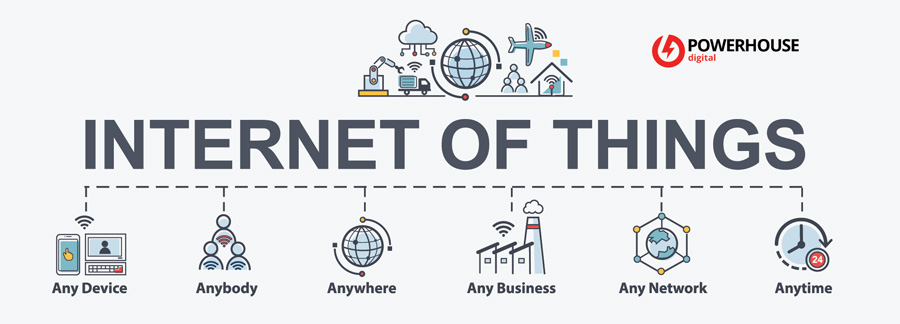The Internet of Things, or IoT, brings together a number of connected devices into a single network, facilitating internet-enabled data sharing between the machines. All devices within the network can communicate with each other, collecting and sending information to spark some form of action.
At its core, IoT is a case of ‘if this, then this’. A very simple example can be seen with connected home appliances. A connected alarm clock, when beeping, can communicate with a connected coffee machine to instruct it to switch on in the mornings. ‘If this’ (alarm sounding), ‘then this’ (machine activation).
According to KPMG, IoT has the greatest potential of any current technology to drive business transformation, generate long term value, and boost profitability while simultaneously lowering costs.
But how? What does IoT do to bring value to today’s organisations?
IoT uses data to drive action. It enables businesses to collect, analyse, and most importantly, utilise data from valuable sources that they’d previously been unable to tap into. The aim is to enhance organisational resilience; to react faster to rapidly changing landscapes, to deal with the unexpected, and to make scaling easier.
Ultimately, IoT is an educator; it makes data more accessible. It’s then easier for businesses to develop strong strategies tailored to their own circumstances and needs. IoT is set to be a key enabler of the upcoming, widespread shift from demand-driven to forward-thinking, forecast-driven operations.
IoT applications
IoT is no longer a futuristic technology that’s limited only to digital organisations. It’s becoming increasingly accessible to businesses across practically every industry. 63% of users expect to see return on investment within three years. The financial benefits are motivating even more sectors to apply IoT technology to their day-to-day processes, and research & development activities.
Some of the latest applications of IoT include:
- Smart motorways – connected sensors monitor traffic levels, sparking the activation of capacity-boosting solutions such as opening the hard shoulder to minimise motorway congestion.
- Smart farming – connected sensors incorporated into farming equipment design can track and monitor moisture levels, temperatures, and wind speeds to enable farmers to make more informed decisions.
- Smart helmets – connected sensors installed within motorcycle helmets are capable of detecting possible road traffic accidents, contacting family, friends or relevant emergency services upon impact.
- Smart inhalers – connected sensors in asthma inhalers can be used to alert medical professionals to low levels of adherence, helping doctors to design improved strategies for managing the condition.
However, one of the most rapidly emerging applications for IoT is preventive maintenance, particularly within warehousing and distribution sectors. These sectors in particular are of interest right now. As distribution centres gradually begin to embrace digital transformation, they are beginning to hold more and more data. This data is collected and stored through sources such as handheld devices, people tracking, vehicle tracking, automated systems, and more.
The amount of potential here is huge. And yet, many centres do not have a way to make sense of this data or use it to their advantage.
That’s where IoT comes in.
Get in touch to book your Consultation Call

Preventive maintenance: an emerging area of interest
Preventive maintenance is a forward-thinking approach to eradicating many of the common concerns when using reactive maintenance strategies. Reactive maintenance – addressing problems once they have already occurred – can be both costly and time-consuming, creating operational inefficiencies. Preventive maintenance works to anticipate issues before they arise, reducing unexpected obstacles.
In warehousing and distribution especially, there is an urgent need to shift to preventive maintenance for maintaining the operational performance of loading bay doors. This is particularly true at a time when retailers are making promises of smooth, ultra-fast deliveries to attract and retain customers.
There are two potential ways that IoT is assisting with this:
1. Anticipating problems
Connected sensors that monitor and track loading bay door performance can quickly and accurately identify potential problems before they have an impact on business operations. Should possible issues be detected, the sensors can rapidly alert managers to the situation. This provides them with the opportunity to assess the problem, and develop a suitable solution before a breakdown occurs.
2. Minimising unnecessary action
Many distribution centres automatically replace or upgrade machinery components following a specific period of use to minimise the risk of breakdowns. However, through the data collected by connected sensors, the health status of components can be continually monitored to highlight when a component is reaching the end of its life. This can help businesses reduce costs by minimising unnecessary action.
According to McKinsey, improvements in condition monitoring can reduce maintenance costs by 10-15%.
Benefits of IoT
Cost savings are certainly one of the biggest advantages of investing in IoT technology. But there are a number of other benefits that businesses across multiple industries are seeing from their applications.
- Smarter decision making – with more in-depth insight into the operational performance of individual sites, smarter decisions can be made, and highly tailored strategies developed to alleviate pain points.
- Boosting on-site safety – IoT’s ‘if this, then this’ foundation can ensure that certain actions cannot be undertaken unless specific criteria are met; e.g. locking of a loading door until a trailer is properly secured.
- Improving energy efficiency – data can play a huge role in improving energy efficiency. The technology can be used to prevent the unnecessary opening of doors to prevent rises or drops in site temperature.
Growing investment
It’s predicted that the number of connected devices worldwide will hit 43 billion by 2023 as an increasing number of businesses invest in IoT technology. IoT is undoubtedly one of the biggest areas of investment for today’s organisations, not only within the warehousing and distribution sectors, but across almost every industry.
Businesses are seeking to streamline processes and boost efficiency following the particularly challenging period caused by the global health crisis. It’s expected that interest in the Internet of Things will continue to rise substantially. More and more organisations are seeing the value of not only collecting data but also turning this data into valuable, actionable insight.
Gen8-IoT™ from Powerhouse Digital, is a groundbreaking industrial door management software solution. It increases the productivity of your operation, improving accuracy and cutting costs.
It offers: Advance analytics, alert and notification tools to help prevent costly damages to people and assets.
More importantly, it helps your organisation reduce it’s carbon footprint and works towards meeting your Net Zero targets.
Get in touch to book your Consultation Call

